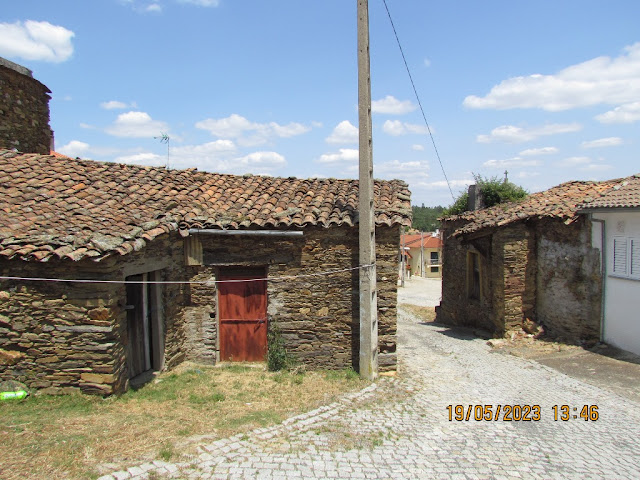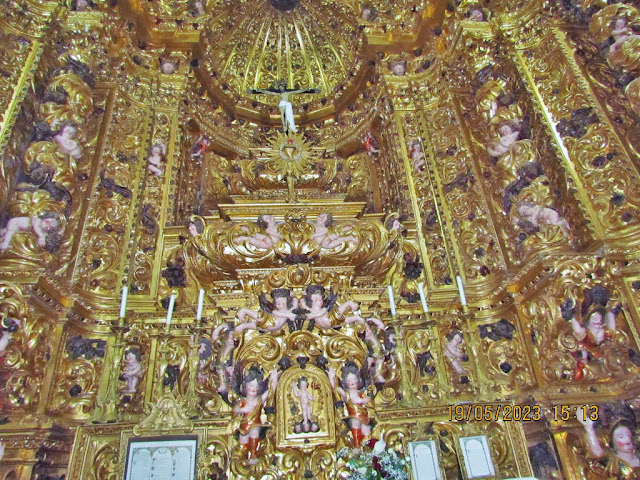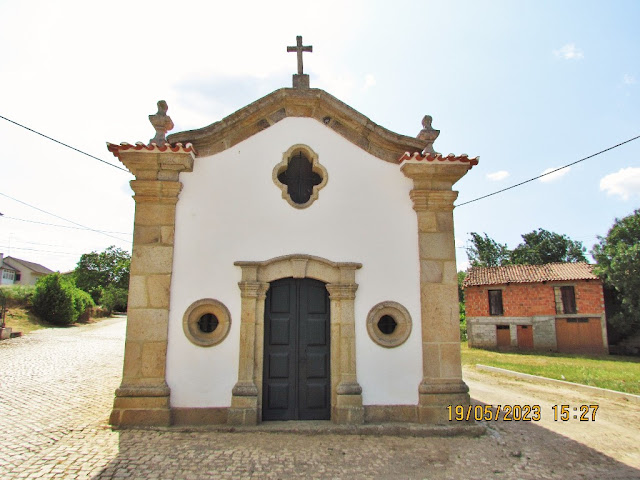OUTEIRO
41.68305º N; 6.60032º W
Outeiro is a Portuguese parish in the municipality of Bragança, with an area of 40.93 km² and 234 inhabitants (2021). Its population density is 5.7 inhabitants/km².
History
It was a town and county seat between 1514 and 1853. It was once called Outeiro de Miranda.
BASILICA OF SANTO CRISTO DO OUTEIRO
The Basilica of Santo Cristo do Outeiro is a church-sanctuary located in the village of Outeiro, in the municipality of Bragança.
This important pilgrimage site has been a national monument since 1927 and on July 12, 2014, it received the title of Minor Basilica, awarded by the Congregation for Divine Worship and Discipline of the Sacraments.
History
It began to be built shortly after a miracle, on April 26, 1698, in which the image of Santo Cristo, in the preceding chapel of Santo Cristo, sweat blood. Although the temple has been open for worship since May 3, 1713, it was only effectively completed in 1739.
Architecture
The architecture of the temple is distinguished by symmetry and balance of proportions. It deliberately follows a baroque model inspired by Manueline architecture, having as its main source the church of the Monastery of Santa Maria de Belém, in an attempt to revive the golden period of the discoveries before the Philippine domain.
Facade
The main facade is inspired by the church of the Monastery of São Vicente de Fora. It is torn by a magnificent twin portal, topped by a large rose window and flanked by two bell towers with a pyramidal finish.
interior
The interior, in baroque style, is typical of hall churches. The polychrome and gilded carved altars stand out.
Sacristy
In the sacristy, the coffered paintings by the Valisoletano painter Damião Bustamante, made in 1768 and also following a 17th-century revivalist trend, stand out.
OUTEIRO CASTLE
The Outeiro de Miranda Castle, better known as Outeiro Fortress, is located in the town and parish of Outeiro, in the municipality and district of Bragança, in Portugal.
In a dominant position at the top of the so-called Monte do Castelo, about a kilometer east of Outeiro, halfway between Bragança and Vimioso, this fortification had, in the Middle Ages, the function of guarding the border of Trás-os-Montes with the kingdom of Leon.
History
the medieval castle
The current configuration of the castle dates back to the reign of King Dinis (1279-1325), when it was rebuilt. During this period, Santa Maria de Octeyro is referred to as a parish (1287) and, a decade later, in the Inquiries of 1297, the village of Outeiro de Miranda is mentioned.
Under the reign of Fernando I of Portugal (1367-1383), during the invasion of Henry II of Castile in the summer of 1369, the village was assaulted and taken over by a ruse, since a petition from the inhabitants, at the time, asked the sovereign the repair of his castle.
During the crisis of 1383-1385, the town and its castle supported the party of D. Beatriz. It is believed that they were conquered in the winter of 1386, during the siege of Chaves by the forces of King João I (1385-1433). Subsequently, with a view to strengthening its settlement and defence, the sovereign granted exemption from paying tribute to all those who built houses within the castle fence, which was then finished rebuilding (1414), and extended the term of the Council (1418). The reconstruction of the castle walls and the increase in the village fence date from this period.
In 1443, the regent D. Pedro ordered the mayor of the castle to hand it over to the Duke of Bragança, who then took over these functions.
Under the reign of D. Afonso V (1438-1481), the sovereign exempted residents from garrisoning the Castle of Outeiro de Miranda (1449). His son and successor, D. João II (1481-1495), determined the reconstruction of its defenses within the Corregimiento of the fortresses of Trallos Montes (1493).
King D. Manuel I (1495-1521) granted it a charter, with the village being transferred from the hill to the valley. The beginning of the period of progressive abandonment and ruin of the medieval castle dates from this phase.
From the Restoration War to the present day
At the end of the 17th century, the castle was attacked by Spanish troops, in the context of the Restoration War. The same would happen again, about a century later, in 1762.
The county was extinguished in 1853, keeping the old abandoned castle out of the movement to rediscover medieval monuments undertaken by Romanticism.
Characteristics
The Castelo de Outeiro de Miranda, at an elevation of 812 meters above sea level, has an organic irregular oval plan, with a thick granite stone wall, which is abundant in the region.
Inside, there is a ruin of a rectilinear building, with a linteled span, where a geodesic landmark was erected.
Access was via a full-arched door, whose remains are visible.
On the south side, the remains of a bastion can still be identified.








































































































































































































.JPG)



















.JPG)












